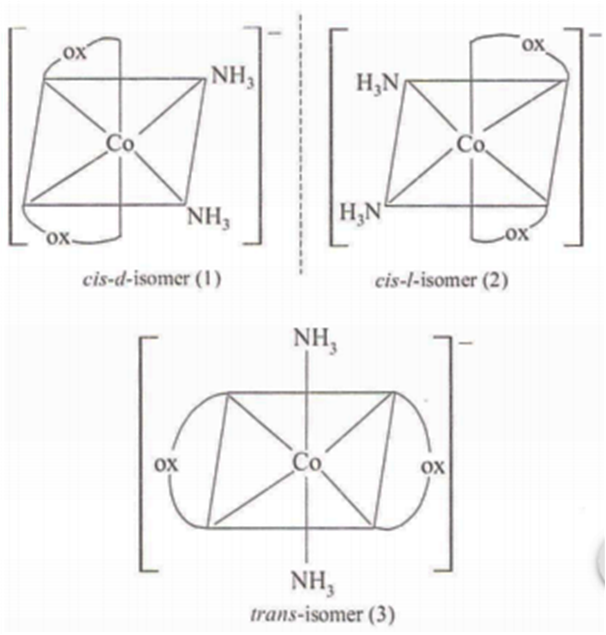 Multiple Choice Questions
Multiple Choice QuestionsThe pair in which both species have same magnetic moment (spin only value) is
[Cr(H2O)6]2+,[CoCl4]2+
[Cr(H2O)6]2+,[Fe(H2O)6]2+
[Mn(H2O)6]2+, [Cr(H2O)6]2+
[CoCl4]2-, [Fe(H2O)6]2+
The number of possible isomers of an octahedral complex[Co(C2O4)2(NH3)2]- .
1
2
3
4
C.
3
[Co(C2O4)2(NH3)2]

The magnetic moment of K3[Fe(CN)6] is found to be 1.7 BM .How many unpaired electron (s) is/are present per molecule ?
1
2
3
4
An aqueous solution of CoCl2 on addition of excess of concentrated HCl turns blue due to formation of
[Co(H2O)4Cl2]
[Co(H2O)2Cl4]2-
[CoCl4]2-
[Co(H2O)2Cl2]
In which of the following pairs both the complexes show optical isomerism?
cis-[Cr(C2O4)2Cl2]3-, cis-[Co(NH3)4Cl2]
[Co(en)3]Cl3, cis-[Co(en)2Cl2]Cl
[PtCl(dien)]Cl, [NiCl2Br2]2-
[Co(NO3)3(NH3)3], cis-[Pt(en)2Cl2]
The correct order for the wavelength of absorption in the visible region is
[Ni(NO2)6]4- < [Ni(NH3)6]2+ < [Ni(H2O)6]2+
[Ni(NO2)6]4- < [Ni(H2O)6]2+ < [Ni(NH3)6]2+
[Ni(H2O)6]2+ < [Ni(NH3)6]2+ < [Ni(NO2)6]4-
[Ni(NH3)6]2+ < [Ni(H2O)6]2+ < [Ni(NO2)6]4-
